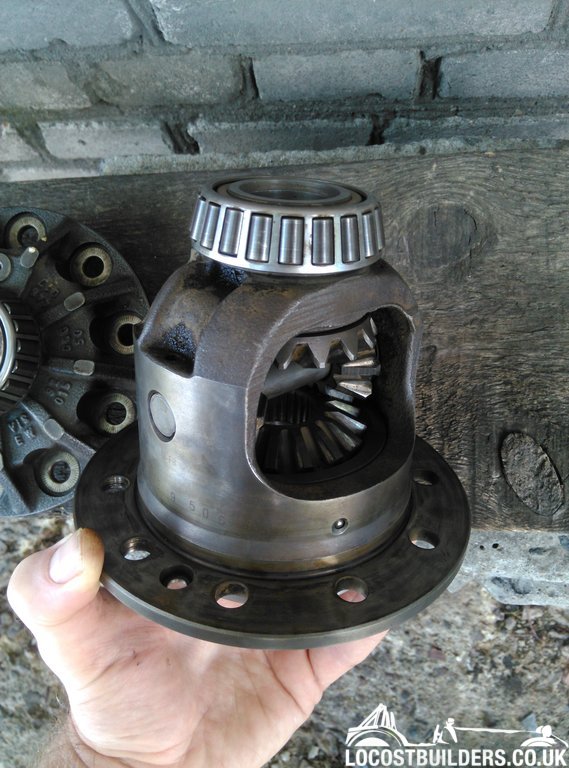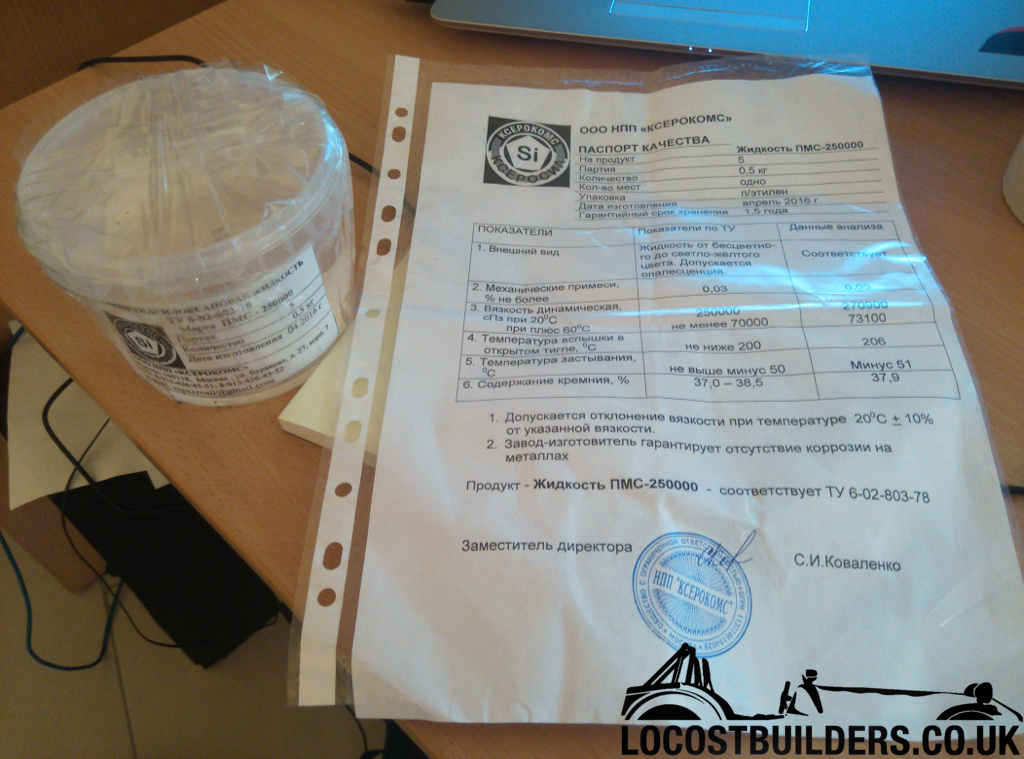





I couldn't find any pictures of a Sierra Viscous LSD taken apart so far. Now that I started overhauling mine I though I should shoot and post
them here for others who are interested. Here they go





Interesting, I've not seen inside one before.
What exactly do you overhaul? What wears out? Does this mean it should be less 'slippy' afterwards?
So how does it work? The thin metal plates act like a series of clutches?
A million questions 

The car didn't spin well to the right although it did to the left. The plan is to refill the LSD with silicone fluid with higher viscousity than
the original fluid.
In fact the original fluid looked more like dense grease or mud when we opened the case.
The principle here is like in other viscous LSDs where the metal plates don't touch each other and pass traction through the fluid.
If anyone did something like this, please share your results and may be some hints which I need to take into account before I refill and put it back
into the car.
KEEP UP POSTED ON HOW YOU GET ON. THINKING OF DOING MINE AS WELL
Bara Motorsports can replace or upgrade the special silicone fluid in the Sierra LSD's viscous coupling.
There is a very specific bubble of air in the fluid, integral to how the slip works.
I have heard that some increase air pressure to change how the slip works (you can't compress a fluid so increased air pressure just provides
some resistance, silicon is not affected by heat but air is, make of that what you will)
I would think the silicon fluid will make s huge difference and not easily controlled this pumping the air bubble could give you a much finer control,
certainly the effect would stiffen the LSD somewhat
Are you doing this your self withouy special tools?
So to hijack post but i am still wanting an LSD unit of and type or condition. I just want the inner LSD bit for a diff rebuild.
Any one got anything?
Hope you know what the fliud is, as its very hard to find the right stuff.
And the "Air bubble" is important. When you dismantled it you need to measure the volume of fluid that comes out to put the same back in.
As for it looking like grease thats right. The closest thing thats easy to get hold of is model car lsd silicon oil/fluid.
We had an autotest event on Saturday and the overhauled viscous unit worked like a charm.
As a fluid we used Polydimethylsiloxane (https://en.wikipedia.org/wiki/Polydimethylsiloxane). As I read on the internet the usual viscousity that is
used to refill different viscous units is 10.000. We used much higher viscousity 250.000:

[Edited on 13/6/16 by hmh]
Awesome pics, and really interesting thread - keep the info coming!
PDMS is non-Newtonian fluid i.e. it's resistance to twisting applied in a diff depends on how fast you are trying to twist it - kinda handy in an
LSD!
The significant bit is that it's the weight of the silane used that needs to be optimised for the locking properties.
There will be alot of people telling you "OMFG you can't understand and re-engineer the viscous pack fluid" - ignore them - you really
can - as it's just engineering and not magic - though it's optimisation which is a PITA without a diff dyno. Drill a hole - flush it out -
try something else - ba duh 
The original stuff in the Ford viscous LSD capsule (not to be confused with the diff oil) is also a silane based grease, obviously optimised for a
1200+kg car, thus not so friendly in a 5-600kg kit car. (Noone would tell us what it was so we got lazy and put it through a mass spec)
I spoke to Bara about this a few weeks back and their approach is basically to use a dynamometer to match a silane viscosity (I didn't get a
straight answer on the range of weights they offered) and given diff (they wear so they are all a little bit different) to the desired locking
characteristics.
The air bubble is predominately to prevent hydraulic lock in the chamber on expansion i.e. the fluid seals could burst as it heats up if it was
totally filled - the shear transfer mechanism is the fluid between the plates - so long as they are covered it shouldn't care! If there's an
engineer with specific knowledge on this I'd welcome a PM
Loving this thread! And not just because I have a spare LSD that was removed as it was too locked off throttle!
Also, as I discussed with Gersen last weekend it kills head lice and cures colic in babies.
I have been looking for a uk supplier. So far I can't get it in an large quantities or the right spec
Large quantities might be a problem
We use it in the labs for making molds for MEMS and microfluidics (generally sciencing the poo of it) so it's a lab grade reagent.
http://www.sigmaaldrich.com/catalog/search?term=PDMS&interface=All&N=0&mode=match%20partialmax&lang=en®ion=GB&focus=product
Think ours comes from Sigma but might help as a starting point (see above) I'll check when I'm in the lab next
Bingham - I had another plan - we make cocktails that turn to jelly if you try to drink them too fast - market it to alcoholics and soon to be
asphyxiating students!
quote:
Originally posted by Gersen
Awesome pics, and really interesting thread - keep the info coming!
PDMS is non-Newtonian fluid i.e. it's resistance to twisting applied in a diff depends on how fast you are trying to twist it - kinda handy in an LSD!
The significant bit is that it's the weight of the silane used that needs to be optimised for the locking properties.
There will be alot of people telling you "OMFG you can't understand and re-engineer the viscous pack fluid" - ignore them - you really can - as it's just engineering and not magic - though it's optimisation which is a PITA without a diff dyno. Drill a hole - flush it out - try something else - ba duh
The original stuff in the Ford viscous LSD capsule (not to be confused with the diff oil) is also a silane based grease, obviously optimised for a 1200+kg car, thus not so friendly in a 5-600kg kit car. (Noone would tell us what it was so we got lazy and put it through a mass spec)
I spoke to Bara about this a few weeks back and their approach is basically to use a dynamometer to match a silane viscosity (I didn't get a straight answer on the range of weights they offered) and given diff (they wear so they are all a little bit different) to the desired locking characteristics.
The air bubble is predominately to prevent hydraulic lock in the chamber on expansion i.e. the fluid seals could burst as it heats up if it was totally filled - the shear transfer mechanism is the fluid between the plates - so long as they are covered it shouldn't care! If there's an engineer with specific knowledge on this I'd welcome a PM
Loving this thread! And not just because I have a spare LSD that was removed as it was too locked off throttle!
Biggest problem is most are 30 years old and barely work at all. To test jack one wheel and see what force needed to turn the other. Use torque wrench on hub nut. Most are at as little as 20 llbft. This is pretty much open. Siearras were about 70llbft I think. This in a heavy car I think is a bit soft. To stop every car entering ditches backwards. After trial and error I have found 75 llbft is ideal for my 7. I use mine in autosolo events. Mine is quite heavy car nearly 700kg. For road only in a lighter car I would suggest about 60 llbft. Test on bench before refitting. Put drive flanges in. Lock one side in vice. Make a plate with bolt welded on so bench test is possible. I can WhatsApp pictures to anyone who is not sure what I mean. Or any questions give me a call. 07957617548.